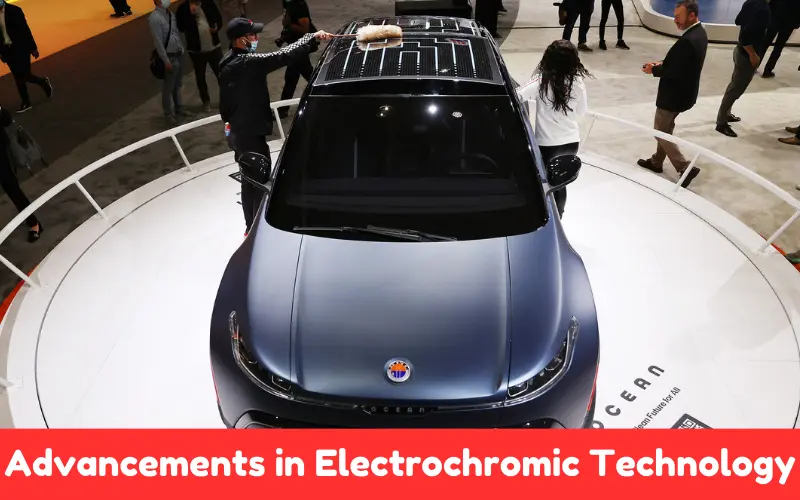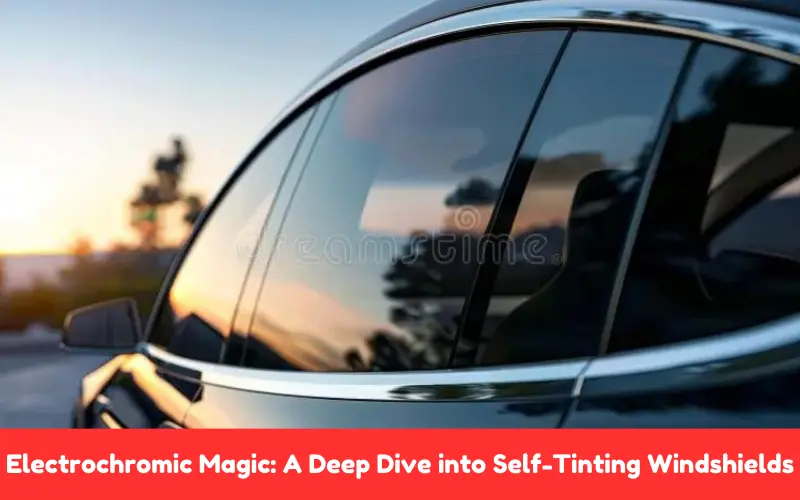With respect to the automobile industry, full of exciting ideas innovating driver or passenger experience and comfort, one of the most dynamic inventions is known as electrochromic glass, allowing you to adjust your automobile glass tint against glare in a few seconds.
But just what is electrochromic magic: a deep dive into self-tinting windshields, and why is it suddenly such a game changer for cars? Let’s talk.
Article Summary
What is Electrochromic Magic Technology?
A material changes color in electro-chromism under the influence of an electric current or field, and the electro-chromism is generally also reversible.
In cars, electrically changeable or electrochromic glasses are often installed in the windshield or sunroof, known as automotive smart glass or smart tint.
How Does An Electrochromic Glass Work?
Electrochromic windshields are made with five or more layers of microscopically thin glass coated with a layer of electrochromic material in between two layers of glass.
The layer will darken when a current is passing through it. By controlling the amount of light in your car, you can, for instance, dim down the sunshine when you are driving.
This particular system is controlled through your infotainment setup or remote control, so you can control the tint to the amount you prefer.
Electrochromic Glass vs. Traditional Tinting Methods
Current window tinting technologies involve applying a film to the window glass, offering fixed tint levels.
This precludes the use of tints in which the tint level needs to be adjustable or in which more glare reduction is required in some circumstances than in others.
Compared with traditional tinting technologies, electrochromic windshields have two properties that could make them highly advantageous.
The first is controllability. Electrochromic windshields can be modulated to any tint level within their range.
The second is stability. Materials used for electrochromic windows and windshields don’t fade over time, unlike many traditional tints.
Which Car Models Have Built-In Electrochromic Glass?
Several manufacturers of high and luxury end automobiles are leading the way in using electrochromic glass, mainly on panoramic sunroofs or sections of windows. Here is a partial list.
- Mercedes-Benz SLC-Class and S-Class Coupé: They call this technology “MAGIC SKY CONTROL”
- BMW iX: This is the brand’s flagship electric SUV that offers electrochromic panoramic sunroof
- Cadillac Celestiq: This ultra luxury EV features a four quadrant electrochromic glass roof that better controls light and privacy.

While Tesla hasn’t made any announcements about electrochromic windshields, rumors persist that they are developing this.
Based on Tesla’s track record with innovative technology, I would bet that in a relatively short time, Tesla windshield OEM glass will be not only used for repairs but engineered for this self-tinting feature, which ‘warms nothing more than the heart of the driver.’
Benefits of Electrochromic Windshields
The advantages of electrochromic windshields extend beyond mere convenience:

- Glare Reduction and Improved Visibility: Glare Reduction and Visibility: Enhanced visibility with safe driving as darker tint gets lighter when the sun is near, and lighter tint gets darker at night.
- Energy Efficiency and Reduced Interior Heating: Solar heat penetrating into the vehicle’s cabin can be regulated by electro-chromically tinting the windshield. This can lower the load on the vehicle’s air conditioning system and improve energy efficiency.
- Enhanced Safety and Comfort: The glare and heat blockage of the electrochromic windshield improves driver and passenger safety and comfort, making trips more pleasant.
- Aesthetic Appeal and Customization Possibilities: The tint is adjustable, and this aesthetic feature tends to enhance (slightly) the sophistication of the product and make the item more tailored to individual preferences.
Challenges and Limitations of Electrochromic Technology
But, while electrochromic glasses mark an important step forward, they’re not perfect. For one, the technology is currently more expensive, on average, than traditional tinting, around $100 per square foot, and may be available only in select car models, luxury vehicles, electric vehicles, and the like.
Besides the high cost, a downside of some of the electric chromic glasses is that they can take several seconds to darken or frost completely. Furthermore, certain materials have issues with temperature resistance and durability.
Similarly, issues can arise with machinery, though a strong warranty and service network largely mitigates that problem.
Advancements in Electrochromic Technology
Sadly, conventional ECDs suffered from poor color contrast and poor cycling stability for many years.
In order to tackle these problems, researchers from Tsinghua University use a high surface area, ultra porous tin oxide (SnO2) nanosheet scaffold built onto electrochromic PANI and V2O5 layers, increasing the achievable color range, cycling stability, and overall performance, potentially paving the way for a new generation of smart automotive glass.

With these developments, electrochromic glasses could offer better color changes and more reliable functions.
While switch speeds are an area for part improvement, greater robustness, and a much greater color gamut are a huge step above where electrochromic technology is today.
These developments introduce the potential for much more intelligent windshields to become adaptable to any driving condition for maximum car comfort for the driver.
Conclusion
Electrochromic windshields represent a model of automotive technology and automotive design that heralds the way we might drive in the years to come.
Now that it has become affordable, we can expect it to be put to large-scale use, and we will enter yet another new era of automotive evolution.
Get ready to turn up the bright because the road ahead is about to get brighter with electrochromic technology at the wheel.

